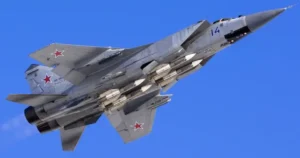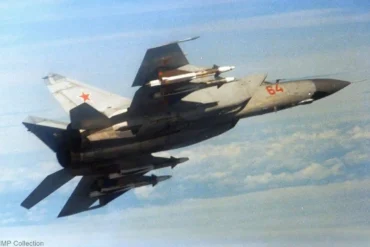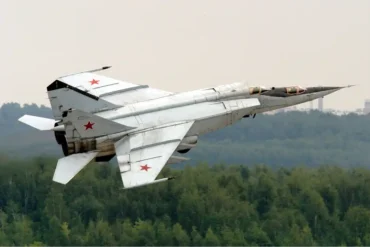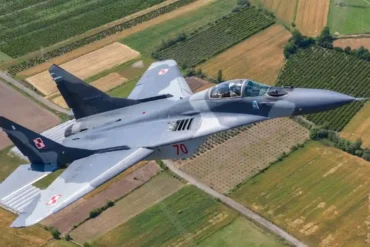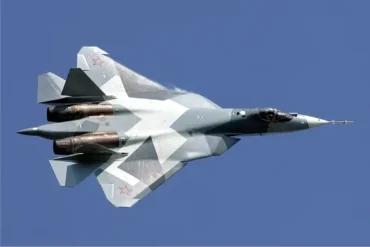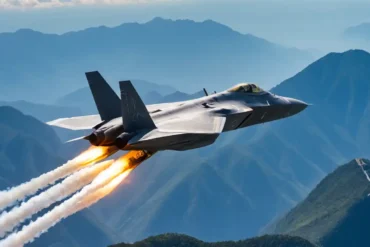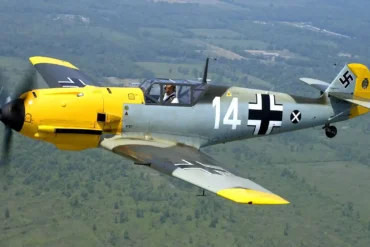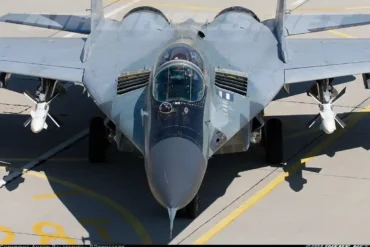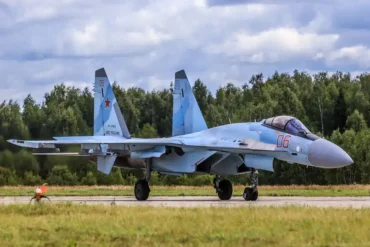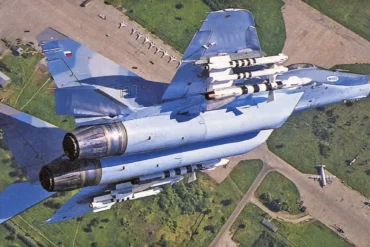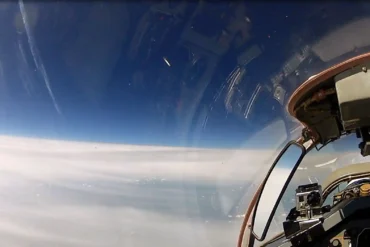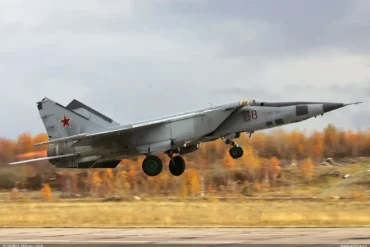The MiG-31M stands as the crowning achievement of Soviet military aviation, which explains why many of its specifications remain classified today. What we do know is remarkable – the MiG-31M exceeds the maximum speed of all comparable aircraft worldwide by an impressive margin of nearly 500km/h. Each MiG-31 is capable of operating independently or serving as an airborne command center, effectively coordinating the movements of other interceptors, supporting fighters, and ground-based air defense systems. Its sophisticated onboard computer and communication systems are specifically designed for this commanding role. The aircraft proved so effective that its deployment notably reduced the frequency of American reconnaissance flights.
Let’s look at how we got here. The MiG-25 Foxbat initially caused quite a stir in Western military circles, but its true capabilities came to light when one of these aircraft defected to Japan on September 6, 1976. Beyond the typical challenges associated with Soviet manufacturing, such as quality control issues and finishing that didn’t quite meet Western standards, NATO analysts discovered that the MiG-25’s design philosophy prioritized raw speed above all else.
The Foxbat had significant limitations – it wasn’t suited for close-range aerial combat and proved difficult to handle at lower altitudes. Its powerful engines, while impressive on paper, were surprisingly fragile and deteriorated rapidly when pushed to maximum speed, requiring frequent replacement. Furthermore, its considerable fuel consumption severely limited the aircraft’s effective range during supersonic flight.
In 1975, Soviet engineers began developing an enhanced version of the Foxbat, using the same basic airframe, with the intention of replacing both the MiG-25 interceptor and the aging Tupolev Tu-128. The first prototype, designated Ye-155MP, made its maiden flight on September 16, 1975. The engineers at OKB Mikoyan made several crucial improvements: they increased the use of titanium and aluminum in the aircraft’s structure, implemented a new engine design, expanded the internal fuel capacity, and enabled sustained supersonic flight at low altitudes.
Western intelligence satellites quickly spotted the prototype at the Ramenskoye flight test center near Moscow, where they frequently monitored emerging Soviet technology. Following this initial discovery, the aircraft mysteriously vanished from view, only to reappear in 1985 when a Norwegian pilot captured a photograph of it in flight, and later at the 1991 Paris Air Show where it was formally unveiled. During this period, the Soviets conducted extensive testing with approximately ten prototypes and pre-production models before beginning full production in 1979. They designated it the MiG-31, while NATO assigned it the codename Foxhound.
The MiG-31 bears a strong resemblance to its predecessor, the MiG-25, but introduces a significant change with the addition of a second crew member who manages weapons systems and onboard equipment. Notable design modifications include enlarged wings and air intakes, which enhance low-altitude performance while somewhat limiting maneuverability in dogfights – a trade-off the Soviets deemed acceptable since the aircraft wasn’t intended for close-range aerial combat.
When it comes to performance, the numbers are impressive. Its twin D-30-F6 engines theoretically enable speeds up to Mach 3, though practical limitations restrict it to Mach 2.83. The aircraft’s substantial fuel capacity provides remarkable range capabilities: at Mach 2.35, a MiG-31 can cover approximately 720 kilometers. Soviet military planners determined that a group of four aircraft could effectively patrol an area of 800 by 900 kilometers – perfect for defending Russia’s vast airspace. The maximum operational range extends to an impressive 2,200 kilometers.
A key enhancement came in the form of an extraordinary radar system. Beginning with the MiG-31B variant, the aircraft incorporated the groundbreaking Zaslon-A electronically scanned radar, developed by Phazotron. This sophisticated system could simultaneously track ten targets and engage four of them, including targets below and behind the aircraft – capabilities that made the Foxhound significantly more formidable than its predecessors. Each MiG-31 was also equipped with an APD-518 data link system, enabling seamless communication with ground stations, Soviet AWACS aircraft, and other MiG-31s.
Given this advanced technology package, it’s understandable why Western military and political leaders were concerned about the limited information available to them, particularly regarding the aircraft’s missile capabilities – an area where Soviet designers traditionally excelled. Soviet long-range interceptors have consistently carried the most powerful and sophisticated missiles in their inventory.
The MiG-31’s armament is indeed impressive. Beyond its internal 23mm GSh-6-23 cannon, it features four under-fuselage hardpoints and two underwing stations for external weapons. Its primary armament, the R-33 (NATO designation: AA-9 Amos), boasts a remarkable range of up to 120 kilometers. A typical loadout consists of four R-33 missiles under the fuselage plus two shorter-range missiles, which might include the AA-6 Acrid (originally developed for the MiG-25), AA-8 Aphid, or AA-11 Archer for close-range engagements. Plans have been made to integrate the newer AA-12 Adder into the MiG-31’s arsenal.
As of 1991, the MiG-31 was exclusively operated by Soviet air units. Following the dissolution of the USSR, Russia retained the majority of these aircraft, while Kazakhstan acquired approximately forty units. Operating these sophisticated interceptors proved financially challenging, particularly during the economic downturn that followed the Soviet collapse. Many aircraft were placed in storage due to budget constraints, though efforts since the early 2000s have focused on returning them to operational status.
By 2015, the Russian Air Force (VVS) maintained a fleet of 134 operational MiG-31s, with an additional 150 in reserve. The aircraft’s operational history includes approximately 45 losses through September 2015. Despite marketing efforts in the 1990s targeting potential buyers such as India, Israel, and more recently Syria, no export sales have materialized. An interesting development occurred in 1992 when China secured a production license for 700 MiG-31s, though evidence suggests this license remained unused, barring any undisclosed changes in Russian policy.
In today’s aerospace environment, the MiG-31 maintains its effectiveness, with MiG continuing to develop more sophisticated variants to modernize the existing fleet. A recent development saw Kazakhstan contracting MiG to upgrade twenty aircraft to the MiG-31BM standard. This comprehensive modernization program, initially conceived in the early 2000s but delayed by financial constraints, encompasses significant improvements to weapons systems and avionics, including an advanced radar system and a modern cockpit featuring three large multifunction digital display screens.
When we consider the aircraft’s capabilities, the MiG-31 truly excels in its primary role of intercepting and neutralizing diverse threats, from low-orbit satellites to cruise missiles. When operating as an interceptor group, it effectively controls a substantial portion of airspace, directing targets to supporting fighters and ground-based air defense systems. Russian pilots have affectionately nicknamed it the “flying radar” due to its exceptional radio and electronic equipment. At the heart of this sophisticated system lies the ‘Zaslon’ (shield) weapon control system, featuring the world’s first phased array antenna, which can track multiple targets simultaneously by electronically steering its radar beam.
The current operational Zaslon-M system represents a significant upgrade, extending the maximum detection range for aerial targets to an impressive 320 kilometers. This system can track 24 targets at distances up to 200 kilometers. The advanced onboard computer prioritizes the four most critical threats for engagement with long-range air-to-air missiles, while medium and short-range missiles can be employed against four additional targets, bringing the total simultaneous engagement capability to eight targets. Alternatively, target data can be shared with supporting fighters and ground-based air defense systems.
An interesting distinction from most modern fighter aircraft (excluding fifth-generation models) is the MiG-31’s sustained supersonic capability. While typical fighters are limited to brief supersonic flights of 5 to 15 minutes due to airframe design limitations, the MiG-31’s supersonic endurance is constrained only by fuel capacity. Furthermore, it can achieve supersonic speeds both in level flight and during climbs, unlike many supersonic aircraft that require a slight descent to break the sound barrier.
Key Technical Specifications:
Crew Configuration:
- Two-person crew (pilot and weapons systems officer)
Dimensional Characteristics:
- Overall length: 22.62 meters
- Wingspan: 13.456 meters
- Height: 6.456 meters
- Wing area: 61.6 square meters
Weight Parameters:
- Empty weight: 21,820 kilograms
- Standard gross weight: 41,000 kilograms
- Maximum takeoff weight: 46,200 kilograms
- Fuel capacity: 16,130 kilograms internal storage, with provisions for additional external fuel tanks
Powerplant:
- Configuration: Two Soloviev D-30F6 afterburning turbofan engines
- Thrust ratings:
- Dry thrust: 93 kilonewtons per engine
- Afterburner thrust: 152 kilonewtons per engine
Performance Specifications:
- Maximum speed capabilities:
- High altitude: 3,000 km/h (Mach 2.83) at 21,500 meters
- Low altitude: 1,500 km/h (Mach 1.21)
- Cruise speed: 2,500 km/h (Mach 2.35)
- Range variations:
- With external fuel tanks: 3,000 – 5,400 kilometers
- Combat range: 720 – 1,450 kilometers (varying with speed and altitude)
- Service ceiling: 25,000 meters
- Rate of climb: 288 meters per second
These specifications demonstrate the MiG-31’s exceptional performance capabilities, particularly in terms of speed, range, and operational ceiling, making it one of the most formidable interceptor aircraft ever developed.
